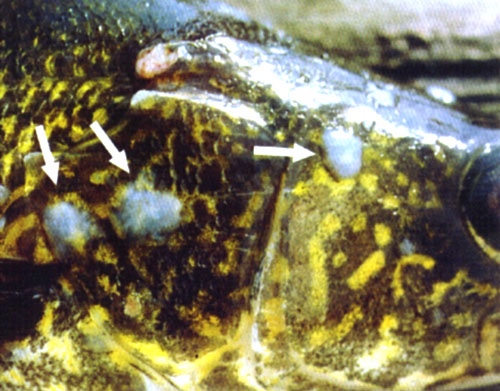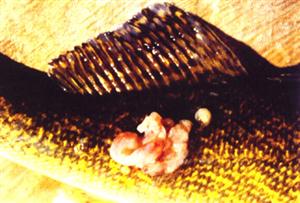Growths
Growths are a swelling found on the body of the fish. While there is evidence that cancerous growths found in fish are sometimes caused by chemicals, not all fish cancers result from chemical exposure. Viruses are known to cause cancerous and non-cancerous growths. Because you cannot tell just by looking at the fish if growths are cancerous, a sample can be sent to a laboratory to be correctly analyzed. The following are examples of non-cancerous growths that can be found on fish.
Lymphocystis
Lymphocystis is a disease caused by a virus that affects several kinds of fish such as walleye, northern pike and lake whitefish. Infected cells grow in size until they can be seen as lumpy white growths. The disease generally infects less than 1% of the fish population. It develops slowly and seldom kills fish.
Dermal Sarcoma
Dermal Sarcoma is a disease caused by a virus that only affects walleye. It causes skin growths before or during spawning and can affect up to 10% of walleye in a population. The growths seldom kill the fish and usually disappear in the late spring as the water warms, but some fish remain affected into late summer and fall.
Epidermal Hyperplasia
Epidermal Hyperplasia is a disease caused by a virus that affects walleye and northern pike. The skin thickens, forming bumps outside the scales. This disease is fairly common and can affect up to 10% of fish during spawning. The growths seldom kill the fish and usually disappear in the late spring as the water warms.

Arrows point to thickened patches of skin on a walleye caused by epidermal hyperplasia. Source: DFO 1999









